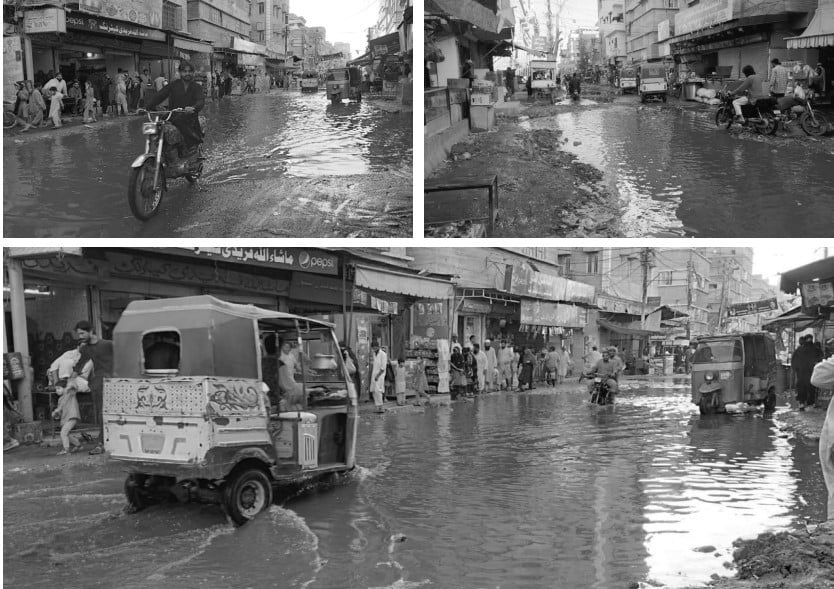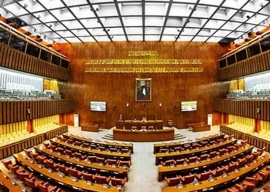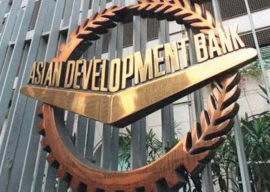
Liaquatabad, one of the most densely populated areas in the metropolitan city of Karachi, is currently struggling with its dilapidated sewerage system as foul smell emanating from raw sewage makes the life of residents miserable.
Located in the heart of the megalopolis, this locality serves as a major hub for cargo transportation, especially at night. However, the rapid growth and unchecked construction of multi-storey buildings have put a huge pressure on its sewerage system, leading to its near collapse. As a result, many parts of Liaquatabad now suffer from overflowing sewers, stagnant sewage water, and stinking piles of garbage, making daily life challenging for residents.
Local residents have repeatedly voiced concerns, blaming the Sindh government's negligence for the deteriorating conditions in their locality.
A report compiled by The Express Tribune based on interviews with residents underlines the need for immediate government intervention and a long-term solution to Liaquatabad's sewerage crisis.
Former councillor and social leader, Sana Fayyaz, believes that the unplanned construction of multi-storey buildings has overwhelmed the existing sewerage system. She said that 20-25 years ago, Liaquatabad mainly consisted of single-storey homes. Now, it has transformed into a "concrete jungle" of three- to five-storey buildings, increasing the pressure on basic infrastructure.
Sana criticises the government for allowing such unchecked growth without proper planning, questioning how these high-rises were permitted without upgrading the required infrastructure.
Anusha Niaz, a long-time resident of Liaquatabad's C-1 Area, echoed the same concerns. She explains that streets originally designed for 40 single-unit houses now host 200 housing portions, with the population in these streets ballooning from 200 to 800. The outdated sewerage system, originally built to handle the needs of just 40 homes, is now overburdened. This issue is widespread throughout Liaquatabad, affecting neighbourhoods such as C-1, B-1, Firdous Colony, Sharifabad, Bandhani Colony, and others.
According to a local trader Umair Farooqui, Liaquatabad's bustling commercial markets - featuring wholesale electronics, jewellery, clothing, and food stalls - are also suffering. The frequent sewage overflows are affecting both businesses and residents, as they must brave the stench, filth, and unsafe streets flooded with wastewater.
Saba Rehman, a resident of Liaquatabad No 3, added that the sewerage issue is disrupting daily life, especially for children, the elderly, and women.
Despite electing representatives to address such problems, no tangible efforts have been made to resolve the crisis, she said.
Political tensions have also surfaced in the locality. Rameez Ahmed Khan, a local PPP worker, criticises the Jamaat-e-Islami (JI) representatives in the local government for not addressing these issues.
On the other hand, Faisal Ali, an MQM-P representative, claimed that his party's initiative was actively working to solve Liaquatabad's problems. However, Muhammad Junaid Ahmed of Jamaat-e-Islami claimed that their representatives are trying to improve conditions but are facing obstacles in securing funds from the Sindh government.
Urban planner Zahabia Khozema believes that Liaquatabad's sewerage issues should not exist, given its proximity to the Lyari River and Gujjar Nullah, which could handle the locality's wastewater.
She slammed the government for allowing high-rise buildings without proper planning and called for an overhaul of Liaquatabad's sewerage system.
She also called for enforcing building laws, and empowering local governments to manage resources effectively.
Dr Syed Nawaz Alhuda, a regional planning expert, warned that unplanned vertical growth is worsening the situation. He pointed to census data showing Liaquatabad's population had grown from 449,497 in 2017 to 547,706 in 2023. He stressed the need for comprehensive urban planning, as the locality's aging water and sewerage systems pose huge risks during rainfall, potentially leading to even greater infrastructure failure.
Union Council 6 Chairman Syed Moin Abbas Madni also acknowledged the strain on Liaquatabad's sewerage system due to illegal constructions and overpopulation.
On their part, the KWSC officials added that the situation has worsened recently due to heavy rainfall, which caused a 48-inch sewerage line to collapse at two places. However, they assured residents that repair work is nearly completed, and the situation should improve soon.

1726228095-0/dave-grohl-(1)1726228095-0-405x300.webp)


1726447266-0/Shakira-(1)1726447266-0-165x106.webp)













COMMENTS
Comments are moderated and generally will be posted if they are on-topic and not abusive.
For more information, please see our Comments FAQ